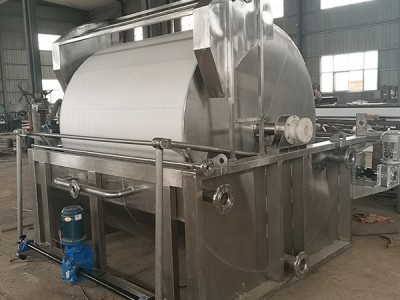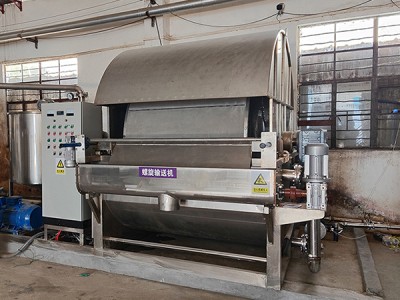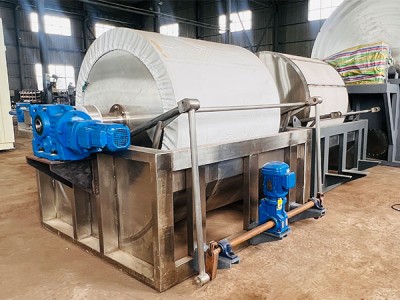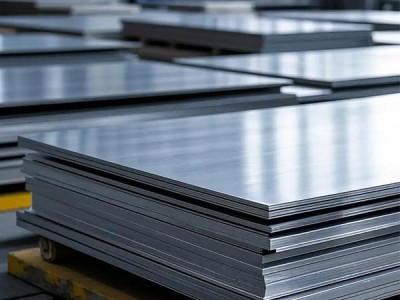Both disc filters and screen filters are widely used in various scenarios, with their core function being the removal of particulate impurities from fluids. Below is a detailed breakdown of the differences between these two types of filters.
Screen Filter
A screen filter is a simple filtration device that primarily relies on the pores of a fixed screen to physically trap particulate matter in fluids, thereby achieving solid-liquid separation.
Key Functions:
Filtering Suspended Solids: Removes particulates, scale, and other impurities from water or oil, reducing turbidity.
System Protection: Prevents impurities from clogging pipelines or equipment.
Rotary Disc Filter
The rotary disc filter is a high-efficiency filtration device that features multiple rotatable filter discs as its core and integrates automatic backwashing technology to achieve continuous solid-liquid separation.
Key Functions:
Deep Solid-Liquid Separation: Captures micron-sized suspended solids and colloids through vacuum negative pressure, significantly reducing turbidity and ensuring clear filtrate.
Continuous and Stable Operation: Filtration, backwashing, and slag discharge proceed simultaneously without the need for shutdown, with the vacuum system guaranteeing uninterrupted processes.
Protection of Subsequent Systems: Traps tiny particles to prevent clogging and wear of downstream equipment (such as pumps and pipelines), extending their service life.
Low-Consumption and High-Efficiency Filtration: Driven by vacuum with low energy consumption, the filter discs offer high utilization rates. Automatic backwashing reduces filter media loss and maintenance costs.
Differences
We have briefly covered the fundamental differences between screen filters and Rotating disc filters, as well as their respective roles. Below is a table offering a visual comparison of their distinctions.
| Comparative dimension | Screen Filter | Rotating disc filters |
| Working principle | Relying on the fixed pores of the sieve to physically intercept impurities in the fluid, impurities adhere to the surface of the sieve and need to be shut down for disassembly or simple backwashing cleaning. | Powered by vacuum negative pressure, impurities deposit on the filter medium when sewage flows through the filter disc. After the pressure difference reaches a certain value, the motor drives the filter disc to rotate, and with the help of a backwash device, the impurities are automatically cleaned. The filtration process is uninterrupted |
| Filtration accuracy | Wide precision range, ranging from tens of micrometers to a few millimeters, can be flexibly customized according to the mesh aperture | Stable accuracy, mostly concentrated in 5-50 microns, suitable for fine filtering scenarios |
| Operation and maintenance | Low degree of automation, mostly manual cleaning, some can be paired with simple backwashing, simple maintenance steps, no need for professional operation | High degree of automation, capable of automatic backwashing, automatic slag discharge, and supporting remote control; The filter disc can be disassembled separately, making maintenance convenient and eliminating the need for frequent replacement of filter media |
| Handling traffic | Suitable for handling small and medium-sized traffic, suitable for scenarios such as home and small devices | The processing flow is large, with a maximum processing flow of up to 1000m ³/h per unit, and the processing capacity can be increased through modular installation |
| Applicable scenarios | Widely used in agricultural irrigation, small-scale industrial pretreatment, household water purifiers, front-end filtration of water pumps, etc., focusing on intercepting larger particle impurities | Widely used in high flow scenarios with high requirements for effluent quality, such as deep treatment of municipal sewage, large-scale industrial wastewater reuse, and river water purification |
| Cost price | Simple structure, low material and manufacturing requirements, and overall low price | Due to the inclusion of complex components such as vacuum systems, motors, and automatic control systems, and the fact that most of them are made of corrosion-resistant stainless steel, the equipment procurement and installation costs are relatively high |
| Energy consumption situation | No additional power consumption, only manual cleaning or simple backwashing may require a small amount of manpower or water resources | Low energy consumption, the vacuum system, drive motor, and backwash process consume a small amount of electrical energy, and the main motor power is mostly within 1.0-2.0KW |
Summary
Although both screen filters and Rotating disc filter are solid-liquid separation equipment, they differ in focus regarding core design, operation mode, and application scenarios. Screen filters, featuring a simple structure and low cost, are suitable for small-to-medium flow and low-precision filtration needs. In contrast, Rotating disc filter, leveraging the advantages of automatic continuous operation and high-precision treatment, meet the requirements of large-flow and high-standard filtration scenarios. There is no absolute superiority or inferiority between the two. When making practical selections, customers need to comprehensively evaluate factors such as treatment flow rate, filtration precision requirements, maintenance conditions, and cost budgets. Only by matching the equipment to specific needs can efficient and stable filtration performance be achieved.







